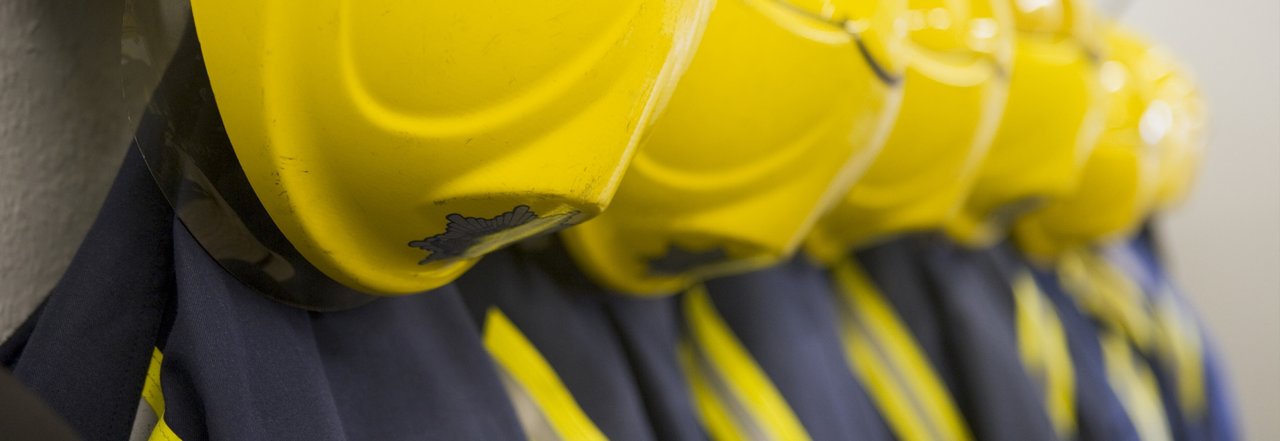
SPONSORED CONTENT
The Pros and Cons of Portable Gas Detection
Understanding the Technology Leads to Better Safety
By Steve Luecke
Many instruments measure airborne levels of toxic gases and vapors, and for industrial hygienists and others who oversee firefighting and emergency response, understanding what types of portable devices will be most useful is not an easy task. Whether you’re responsible for hazmat response, post-fire overhaul activities, or determining the need for respiratory protection, obtaining meaningful measurements of atmospheric hazards is of critical importance. This article describes several available technologies for gas detection.
Photoionization Detectors
Photoionization detector (PID) devices are popular because of their quick response time and ability to detect most volatile organic compounds down to the low parts-per-billion range. A primary consideration for users is determining how specific a device must be for both measuring and identifying a particular gas. Specificity can be a problem when using PID devices; while PID readings are cumulative to a reference gas, they actually consist of varying concentrations of a wide variety of gases. Correction factors are required when measurements are intended to be scaled to specific compounds, and a PID may not see certain gases such as carbon monoxide, hydrogen cyanide, methane, and acid gases. PID lamps should be cleaned after each positive exposure to prevent signal suppression.
Portable Gas Monitors
Most emergency responders are familiar with portable multi-gas monitors with sensors for combustible gas, oxygen, carbon monoxide, and hydrogen sulfide. These units typically have built-in alarms designed for worker safety and monitoring personnel in confined spaces. The combustible gas or lower explosive limit (LEL) sensor provides vital information without being compound-specific. Oxygen, carbon monoxide, and hydrogen sulfide are specifically measured using electrochemical sensors. Additionally, many companies offer single-gas portable monitors that can use a variety of electrochemical sensors specified for other toxic or hazardous gases of interest.
Portable gas monitors are relatively inexpensive, easy to use, and provide basic but critical information about potentially hazardous atmospheres. However, there are limited types of electrochemical sensors, and they have a finite life due to the consumable nature of the electrolytic design. It’s important for users of portable gas monitors to understand the presence of coexisting gases and other conditions that can influence sensor output.
Detector Tubes
Gas detector tubes, or stain tubes, are another option for gas detection. Gas detector tubes use chemical reactions that provide a color change indicated length of stain for rapid and compound-specific qualitative measurements. Commercially available detector tube hazmat kits are currently supplied with logic charts that walk users through the sequence of tubes to use when trying to identify unknown atmospheric hazards. Remote sampling may be accomplished with detector tubes through the use of extension hoses or pole accessories.
As with electrochemical sensors, certain gases can interfere with detector tube tests, but there are hundreds of chemicals that can be measured with detector tubes, including contaminants that other systems can miss.
Atmospheres during Post-fire Overhaul
More professionals responsible for the health and safety of firefighters and emergency responders are paying attention to atmospheres encountered during overhaul activities, the work that occurs after a fire has been put out. The practice of using carbon monoxide as an indicator gas for other airborne contaminants during overhaul is not recommended. Elevated levels of hydrogen chloride (HCl), which are present as a byproduct of burned chloride-containing plastics such as PVC, have been measured during overhaul. These elevated HCl levels can also lead to the formation of phosgene (COCl2).
Users who oversee overhaul activities may consider using a PID, sensor-equipped gas monitor, or detector tube hazmat kit to take measurements during overhaul—when hazards may be present—for training purposes. Alternatively, gas sample bags can be used to collect a representative air sample during overhaul to be used for training at a later date.
Understanding Gas Detection Technology
The variety of conditions and requirements for each application that calls for the measurement of atmospheric hazards ultimately drives the suitability and safety-related benefits of any type of portable gas detection system, or combination of systems. Choose a sound strategy that suits your needs while minimizing any inherent disadvantages in the best possible way. Understanding your portable gas detection technology will help you minimize potential exposures to harmful atmospheres.
STEVE LUECKE, CIH, is industrial hygiene manager at Nextteq. He can be reached at steve_l1@nextteq.com.
For more information, e-mail Ryan Day at Ryan_D1@nextteq.com, visit www.nextteq.com, or call (877) 312-2333.
thesynergist | TOC | NEWSWATCH | DEPARTMENTS | COMMUNITY

